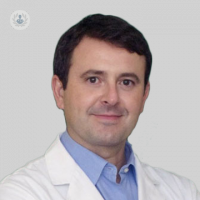Gastric tube, the stomach reduction scarless
Written by:The Operation of Gastric Tube or vertical gastrectomy (“ Sleeve&rdquo, in English ) is the surgery of obesity that has more grown worldwide in the last 5 years. It is an intervention in which a reduction of stomach is done to make the patient feel full after eating small or moderate amounts of food, which allows you to lose weight.
The drop in weight is mainly due to two mechanisms, first because of a&ldquo,&rdquo restrictive mechanism;to reduce stomach volume and on the other hand, patients eat less because they have less appetite due to a“hormonal mechanism&rdquo ,.
The operation of the conducted by Gastric Tube“Laparoscopy”. In function of the characteristics of each patient we can perform surgery through laparoscopy with conventional incisions or 5 mini - Incision Laparoscopy by Unica Homes, single umbilical incision, leaving a nearly imperceptible scar. A small stomach DC converter is constructed 100-150. (normal stomach>1000cc ) which satisfies all the important parts. The intervention takes about 60 minutes and no junction or bypass is performed between the intestines, which reduces complications related to surgical technique.
¿obesity cases in which this technique is indicated
?
There are no absolute indications and each obese patient should be examined by a qualified professional who will establish which is the best surgical treatment to combat their obesity. In OBESAN, patients eligible for surgery of gastric tube are:
& bull; Patients older than 50 years and those who have a BMI ( Body Mass Index ) greater than 50 kg / m 2.
& bull; Patients between 20 and 50 years, with a BMI between 35 and 50 kg / m 2, to submit prior abdominal surgeries, those women in reproductive age who wish to become pregnant, heavy smokers and patients with high surgical risk from diseases associated with obesity (diabetes, hypertension, increased cholesterol, heart disease or respiratory&hellip ;)
.
¿are the advantages of this technique
?
Is can eat everything in small amounts several times a day ( 5-6), keeping the digestive system functioning and respecting the drain back natural.
Patients suffer no loss of vitamins, as in other more aggressive surgical interventions, nor do they have loose stools . Unable surgery modify the small intestine absorbs everything you eat.
Weight loss depends on each patient but is usually between a 60-70 % of excess weight, much of which is lost during the first 6-9 months.
¿How should I prepare for surgery
?
If we reach the day of surgery in the best physical condition, this will make you minimize the possibility of medical complications and surgical. Would be ideal down at least about 5 kilos the months before surgery, with the help of diet and exercise. We know that patients in OBESAN want to be operated on because they have failed almost every diet and have serious health problems. But this last effort prior to surgery is to guarantee the success and also those kilos lowered not recover.
Postoperative
¿, As are the first days after a vertical gastrectomy ?,¿much time I need to recover ?,¿many days I will be unable to go to work?
After the intervention, it is common for a patient with obesity surgery technique Vertical gastrectomy may have discomfort but generally are treated little discomfort and recovery is usually quick. The same day of surgery to reach the room can get out of bed, sit on the couch and even give rides small. Typically, after two days from the intervention, the patient can return home.
About making&ldquo, normal life”as such can not be said to be so, that is obviously the first few days the patient should eat differently, for example the first 24 hours after surgery may take only liquids and so will the least during the first week, in which feeding was based on a liquid diet and supplemental shakes, thereafter until the first month diet will be crushed. Then will go slowly incorporating soft solid foods progressively towards.
Obviously, it is also necessary to consider some extra care after the operation and monitoring such as surgical wound care as prescribed or avoid physical effort. With regard to occupational low, depending on how each case evolves but usually within 2 to 3 weeks after intervention most patients return to work.
Update
The monitoring of the surgical patient is as important as preparation prior to surgery. Monitoring should be performed strictly by the endocrinologist physician, psychologist and surgeon.
The first few months must have strict control of medical visits, to advise as to be fed properly and to detect if there were medical or surgical problems.
In OBESAN monitoring by the surgeon, laparoscopic gastric tube in, once the intervention is a week to 1-3-6-12-24 months. While tracking by the endocrine physician should be annual for several years.




